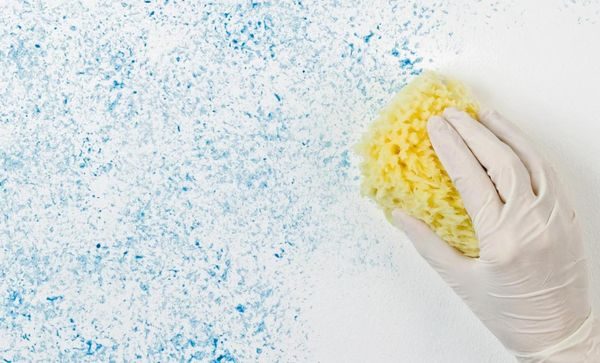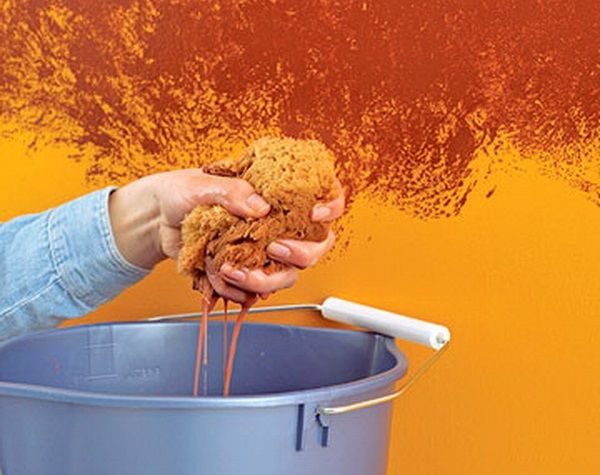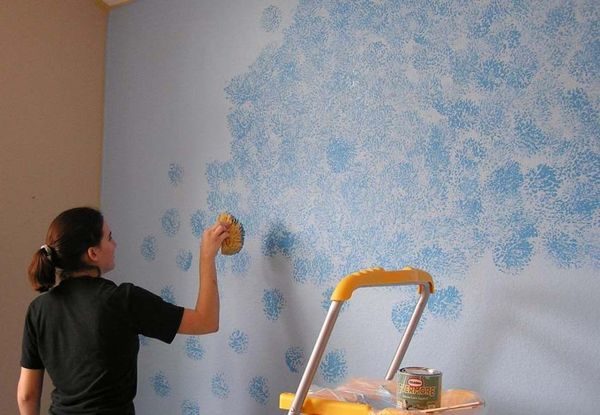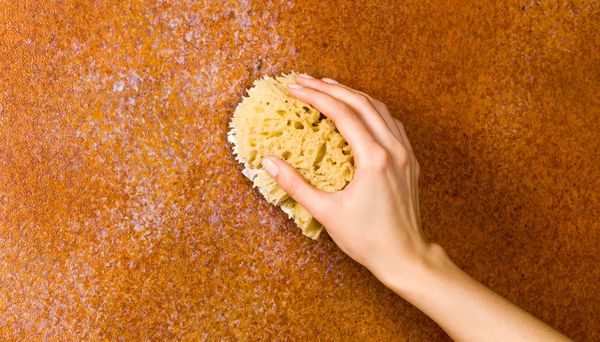Spongeing is a simple and inexpensive way to decorate walls with a sponge. It is perfect for people with creativity who love to decorate the house with their own hands. Thanks to him, it’s really possible to turn an ordinary wall into an exclusive work of art. After all, you can choose colors and create effects to your liking, without imitating other people's design delights.
- Step-by-step instruction
- Step 1
- Step 2
- Step 3
- Step 4
- Step 5
- Useful Tips
- Tip 1
- Tip 2
- Tip 3
- Tip 4
- Tip 5
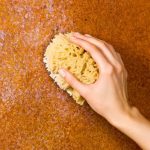
Step-by-step instruction
Before starting the creative process, you need to clean the walls of dirt and dust and check if they are even enough (otherwise the paints will go down not too aesthetically). It is advisable to check whether the selected colors are successfully combined. To see this, you need to put samples of paints on a piece of wallpaper or a sheet of paper and attach it to the wall. Then it is worthwhile to understand in detail the technique of work.
to contents ↑Step 1
For the coloring composition, you need to take a bath container that allows you to thoroughly mix it. Before using emulsion paints, the sponge should be soaked in plain water. If you plan to work with oil-based products, the sponge is soaked in white spirit, then dipped in paint.
to contents ↑To avoid stains on the painted surface, the sponge is pressed against a sheet of paper, thus removing excess. After applying the base coat, it is necessary to wait for it to dry (about 2 hours).
Step 2
For the second layer, you need to prepare a clean container and again process the sponge. It should be very slightly dipped in the composition so that it does not drip. When the sponge is almost dry, the prints are more even. You can periodically blot it with paper.
The pattern should be applied from top to bottom, with light touches to the wall.
For greater uniformity, it is better to paint at different angles. At the very end, the areas below are processed, near the skirting boards. It is better to take a little bit of paint, because when the sponge is bent, it can leak out and leave unnecessary streaks. Upon completion, let the second layer dry.
to contents ↑Step 3
It's time to evaluate the result. If, after the second layer has dried, dark patches have formed on the wall, their shade can be softened by applying the color of the base.
Step 4
Prepare the paint and sponge again for applying the third coat. You need to try to fill the gaps between the prints of the first. The second should also be at least a little shine through.
Step 5
If one color is used, it is worth placing the prints closer to each other so that the surface looks evenly painted. If the colors are different, the opposite is done: they should be slightly shifted. To change the pattern you need to periodically turn the sponge. It is optimal to avoid overlapping prints on top of one another, especially for corners and space at doors.
to contents ↑
Useful Tips
If you like the idea of sponing, use a few recommendations from experienced craftsmen.
Tip 1
To give the painted surface an elegant look, use tinted paint, not white, but darker than the base composition.
Tip 2
The general tone can optionally be applied lighter or darker - it depends on how you see the final result. But be sure to choose well-coordinated shades for the base and the pattern, otherwise something completely unexpected and not very pleasant for the eyes may turn out.
to contents ↑Tip 3
If you want to create an unusual effect of flicker and iridescence, use a matte emulsion for the base. Apply with dark paint.
Tip 4
It is necessary to decide which paint is better to use for sponge. Most often, an undiluted emulsion is used as the color of the base, but with it - without diluting the composition - a drawing is applied. Oil-based formulations are excellent for wood and metal surfaces. Also, certain paints are recommended for various rooms:
- for living rooms (bedroom, nursery, living room, study) - glue, they will provide the desired level of humidity in these rooms;
- in kitchens, bathrooms, hallways, walk-in closets, pantries - water-based and oil-based, enamel;
- exterior walls and doors of houses require special, weather-resistant (silicate, cement, oil).
Tip 5
The sponge is successfully used not only for painting walls. It can be used for decorating the ceiling and painting batteries - the surface will not only acquire an aesthetic appearance, but its drawbacks will not be noticeable either.
Sponding is an absolutely uncomplicated way to create beautiful surfaces without the involvement of designers and craftsmen. The main thing is not to make a mistake with the shades of paint and work carefully, without leaving drips.

